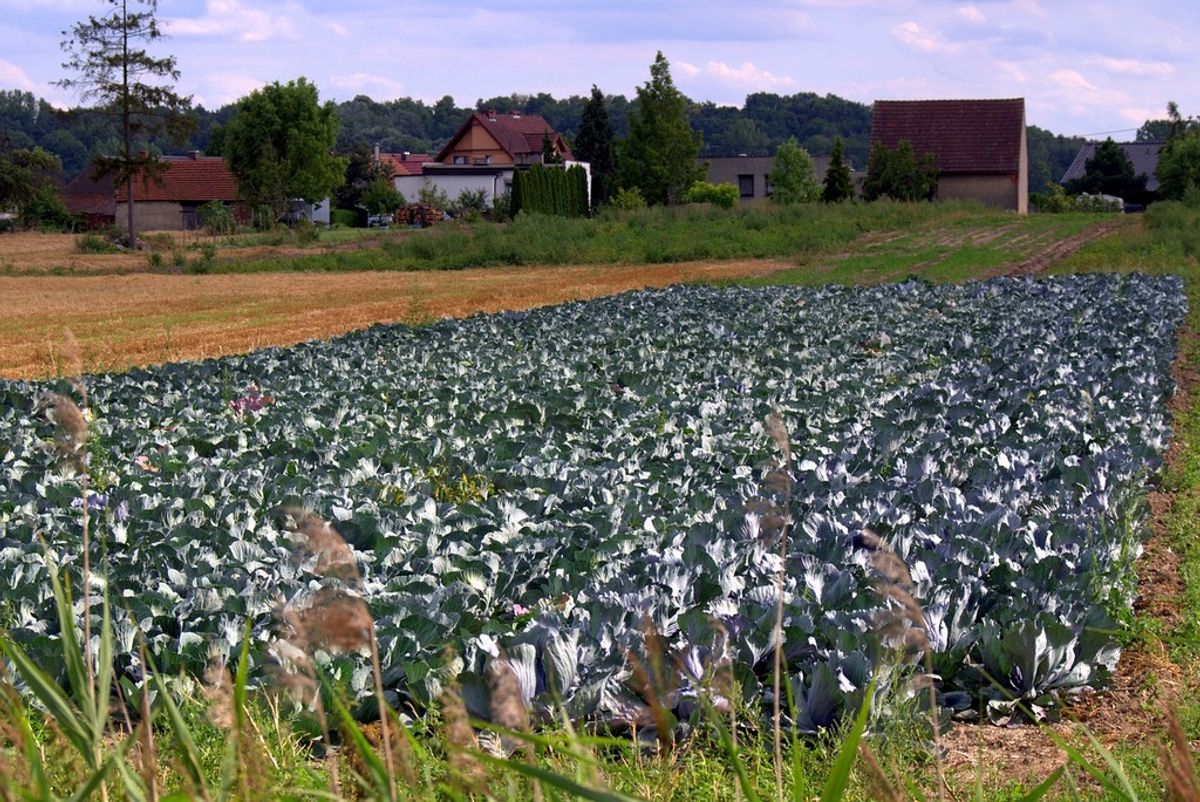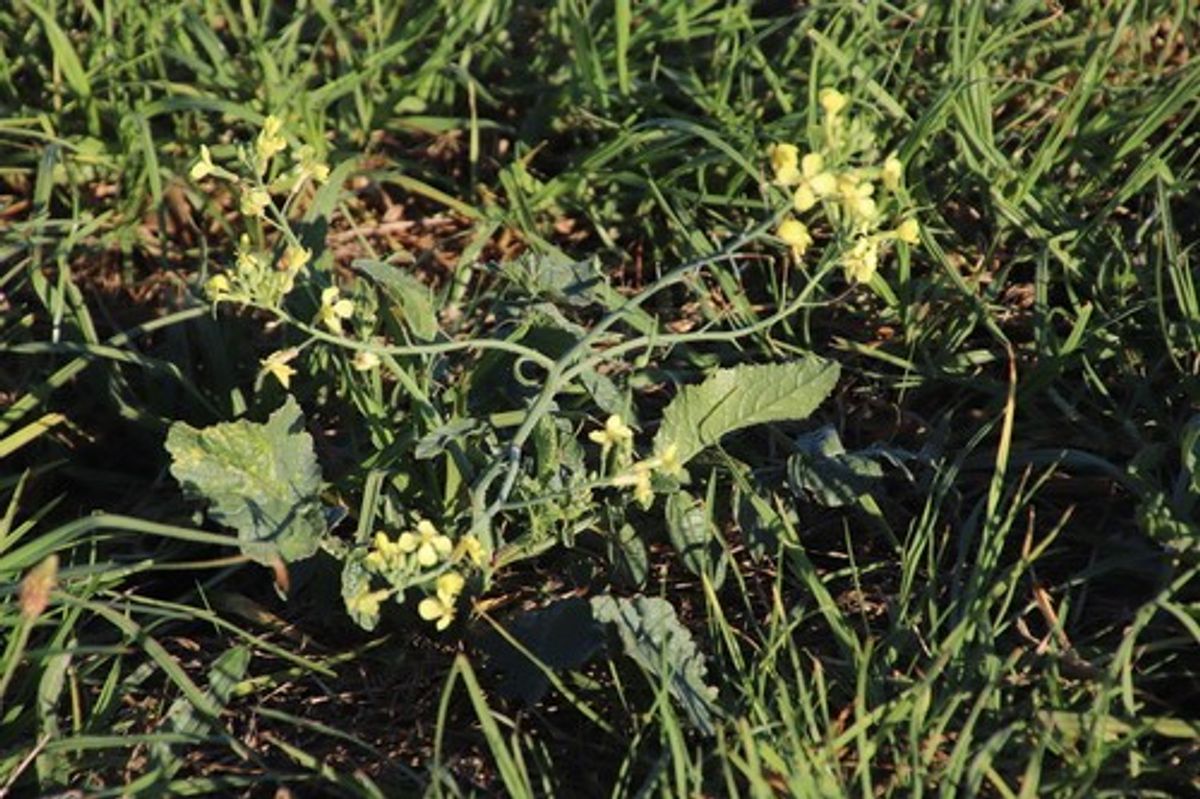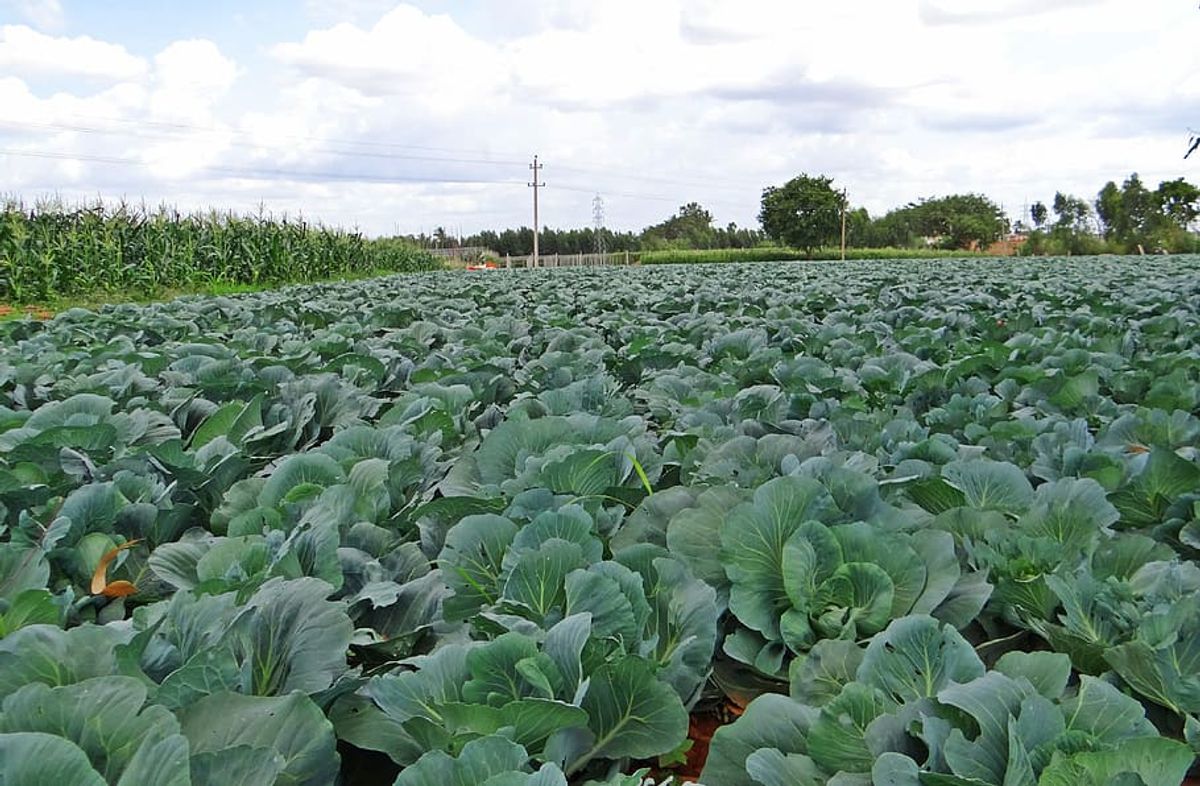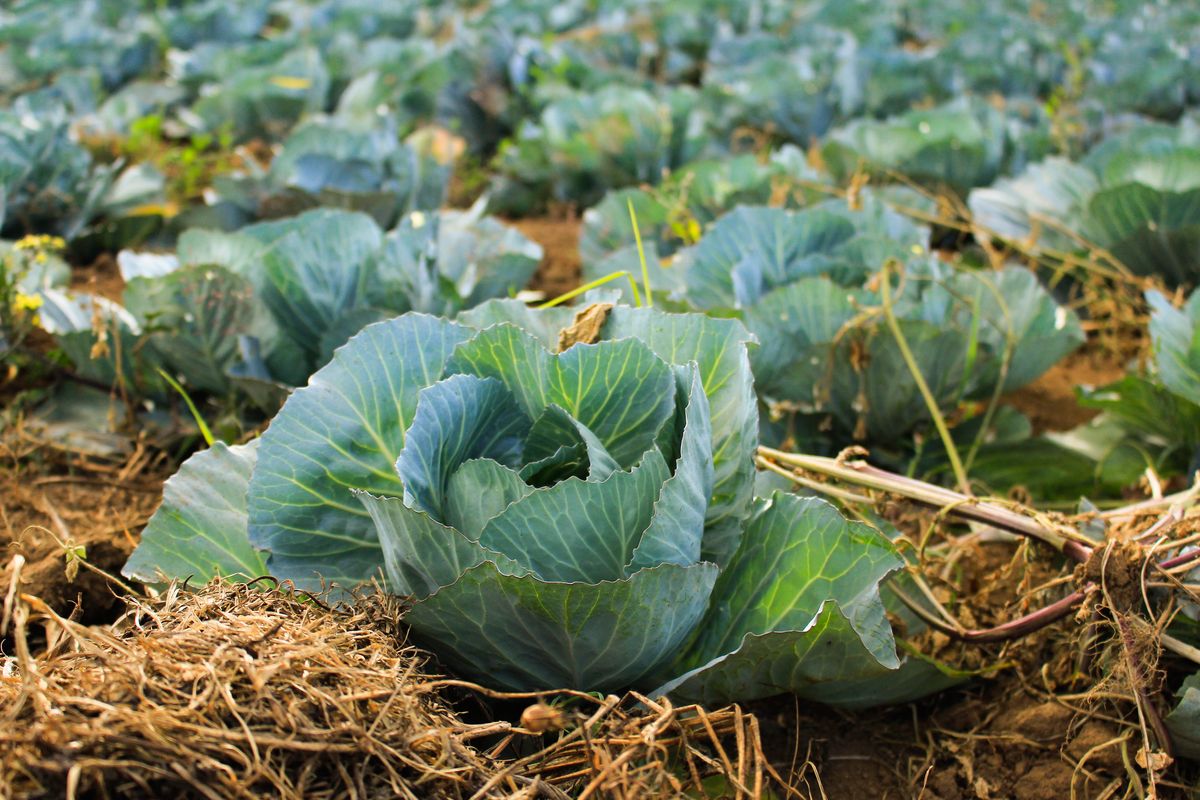Cultivating cabbage can be a rewarding endeavor for both novice and seasoned gardeners. This article provides essential tips for growing a healthy and robust cabbage crop, addressing the specific needs of cabbage plants, from soil requirements to propagation techniques.
By adhering to these guidelines, you can ensure your cabbage thrives, resulting in a bountiful harvest of this versatile vegetable.
Table of Contents
Key Takeaways
- Cabbages require fertile, well-drained soil with adequate moisture and a rich supply of essential nutrients, including potassium and nitrogen.
- Selecting the right container and preparing the soil with organic matter are crucial steps for successful cabbage cultivation, especially for varieties like Napa cabbage.
- Consistent watering, providing about one inch of water weekly, and organic fertilization are vital for maintaining soil moisture and supporting leafy growth.
- Understanding the sunlight and temperature needs of cabbage is key for year-round cultivation, with consideration for regional differences in climate.
- Seed and vegetative propagation techniques, such as collecting mature seeds and taking healthy cuttings, are important for sustaining and expanding cabbage crops.
Understanding Cabbage Crop Requirements for Cultivating Cabbage

Soil Fertility and Drainage
Healthy soil is the foundation of a successful cabbage crop. Ensuring soil fertility and proper drainage is crucial for the growth and health of your cabbage plants. Cabbages thrive in soil that is rich in organic matter, which can be achieved by incorporating compost or aged manure into the soil. This not only improves fertility but also enhances the soil’s structure, increasing its ability to retain moisture and nutrients while still allowing excess water to drain away.
Drainage is equally important to prevent waterlogging, which can lead to root rot and other diseases. If you’re using containers, make sure they have adequate drainage holes. For in-ground planting, consider raised beds or mounds to improve drainage, especially in clay-heavy soils.
To maximize soil fertility, focus on building a healthy soil ecosystem that supports robust cabbage growth.
Here are some simple steps to ensure good soil fertility and drainage:
- Add organic matter annually to maintain soil fertility.
- Test soil pH and adjust accordingly; cabbages prefer a pH between 6.0 and 7.5.
- Ensure proper drainage by using well-draining soil mixes or amending with sand or perlite.
- Avoid compacting the soil to maintain aeration and drainage capabilities.
- Use cover crops or green manures in the off-season to protect and enrich the soil.
Essential Nutrients for Cabbage Growth
Cabbages thrive when provided with a balanced diet of essential nutrients. N-P-K ratios are like the dietary label on your plant’s food, indicating the balance of nitrogen (N), phosphorus (P), and potassium (K). These primary nutrients are crucial for the development of strong roots, healthy leaves, and overall plant vigor.
Potassium is particularly important for cabbages, promoting disease resistance and improving the quality of the crop. To ensure your cabbage has access to these vital nutrients, consider using organic amendments such as wood ash or kelp meal, which are rich in potassium. Additionally, micronutrients like calcium, boron, and molybdenum play significant roles in cabbage development and should not be overlooked.
While cabbages are not overly demanding, a lack of essential nutrients can lead to poor growth and reduced yields. Regular soil testing can help identify any deficiencies, allowing you to amend the soil accordingly to meet your cabbage’s dietary needs.
Selecting the Right Cabbage Varieties
Selecting the right cabbage variety is crucial for your gardening success. Consider the end use of your cabbage, whether it’s for fresh eating, slaw, sauerkraut, or storage. The size and the days from seeding to harvest are also important factors. For instance, the Early Jersey Wakefield is known for its quick maturity and flavorful heads, suitable for multiple growing seasons.
- For quick-maturing cabbage, consider varieties like Golden Acre or Farao.
- Large solid cabbages like Gunma or Early Flat Dutch are ideal for sauerkraut.
- Tendersweet is a great option for hot weather and extended seasons.
When choosing seeds, look for those that produce very flavorful and reliable heads of cabbage. It’s best to select varieties that are well-suited for your climate and intended use.
Remember, the days to maturity can vary based on whether you’re transplanting or direct sowing, and the season you choose to grow. Always consult with local growers or agricultural extensions for the best advice tailored to your region.
Preparing for Planting: Container and Soil

Choosing the Ideal Container
Selecting the perfect container for your cabbage is crucial for ensuring a healthy growth environment. The size of the container is paramount, as it directly influences the moisture retention and overall root development. A larger container will generally retain more moisture, reducing the frequency of watering needed.
Drainage is another critical aspect to consider. Ensure that your chosen container has adequate drainage holes to prevent waterlogging and root rot. Here’s a simple guide to creating optimal drainage:
- Use a 5-gallon plastic bucket and drill holes in the bottom.
- Repurpose household items like laundry baskets or toy bins by adding drainage holes.
- Select food-safe materials to avoid contaminating your edible plants.
When it comes to container gardening, the key is to balance the size and drainage to create the ideal environment for your cabbage.
Remember to choose varieties such as ‘Emiko’ and ‘Barrel Head’ that are known for their resistance to bolting and diseases, making them well-suited for container cultivation.
Soil Preparation and Amendment
Proper soil preparation is the cornerstone of a thriving cabbage garden. Amending the soil with organic matter is crucial for enhancing its structure and fertility. Gardeners will do well to amend the site with a heavy dose of compost or well-rotted manure prior to transplanting. This serves to increase the soil’s nutrient content and improve its ability to retain moisture.
To ensure that your soil is ready for cabbage cultivation, follow these steps:
- Test the soil pH and adjust it to be slightly acidic, with a pH between 6.0 and 7.0.
- Incorporate 2-4 inches of compost or well-rotted manure into the top 6 inches of soil.
- If dealing with compacted clay, loosen it by mixing in decomposed organic matter rather than tilling deeply.
- For a no-till approach, consider sheet mulching with a compost-decomposed wood chips-soil mixture.
Remember, the goal is to create a fertile, well-draining environment that cabbages will thrive in. Avoid over-tilling, which can disrupt soil life and structure.
When selecting your amendments, communicate with your compost supplier to ensure you receive a mix suitable for your method, whether it’s traditional tilling or sheet mulching. A well-prepared soil bed is your first step towards a bountiful cabbage harvest.
Seed Sowing and Transplanting Best Practices
To ensure a successful start for your cabbage crop, proper seed sowing is crucial. Begin by selecting a suitable growing medium; a sterile, nutrient-rich mix is ideal. For summer cabbage, seeds can be sown indoors from February to late March. Sow the seeds thinly, about one inch deep in trays, modules, or small pots. It’s essential to maintain a consistent moisture level after planting—too dry and the seeds won’t germinate, too wet and you risk fungal diseases like damping off.
When transplanting, handle the seedlings gently to avoid root damage. This is the stage where your careful attention can set the foundation for a robust crop.
Remember to disinfect any reused pots or trays with a 10% bleach solution to minimize disease risks. After sowing, cover the seeds lightly with soil and water them in well. Keep the soil moist, but not soaked, and provide adequate warmth for germination. As the seedlings grow, thin them out to prevent overcrowding and promote strong, healthy plants.
Here’s a quick reference for seed depth and spacing:
| Seed Type | Depth | Spacing |
|---|---|---|
| Cabbage | 1 inch | 12-18 inches |
Note: Plant seeds at a depth of 2-3 times their diameter.
Watering and Nutrition Strategies

Maintaining Soil Moisture
Maintaining the right level of soil moisture is crucial for the health of your cabbage crop. Consistent moisture levels are key to ensuring that your cabbages have the water they need without becoming waterlogged. To check if your plants need water, insert your finger into the soil up to an inch deep. If the soil feels dry, it’s time to water; if it’s damp, hold off and recheck later.
During peak summer, watering may be necessary once or even twice a day. Remember, overwatering can be just as harmful as under-watering. Use the following list as a guide to maintain proper soil moisture:
- Cover pots with clear plastic to retain moisture during germination.
- Keep soil level below the container’s edge to allow space for covers.
- Remove covers immediately after germination to prevent excess humidity.
- Ensure good airflow to keep plants healthy and prevent disease.
- Avoid high humidity levels for extended periods to deter fungal growth.
It’s essential to strike a balance between keeping the soil moist and preventing waterlogging. Monitoring and adjusting your watering practices will help promote a robust cabbage crop.
Organic Fertilization Techniques
Organic fertilization is a cornerstone of sustainable agriculture, particularly for crops like cabbage that thrive on nutrient-rich soil. Incorporating organic matter into the soil is not only beneficial for plant growth but also enhances soil structure and fertility. To achieve this, many gardeners mix organic, granular fertilizer into the containers before planting. Additionally, applications of diluted liquid fish emulsion or liquid seaweed every couple of weeks can provide the necessary nutrition for robust cabbage growth.
Organic fertilizers release nutrients slowly, ensuring a consistent supply without the risk of over-fertilization.
It’s important to understand that the cabbage plant requires nitrogen-rich fertilizer, especially for leaf development. Here’s a simple guide to organic fertilization:
- Add compost to the soil to introduce a wide spectrum of nutrients.
- Use well-rotted manure to improve soil texture and add nitrogen.
- Apply organic granular fertilizers according to package instructions.
- Supplement with liquid organic fertilizers like fish emulsion or seaweed extracts.
Remember, the goal of organic fertilization is to maintain a balanced ecosystem within the soil, treating the micro-organisms holistically rather than just focusing on plant growth.
Supplementary Feeding for Optimal Growth
To ensure your cabbage reaches its full potential, supplementary feeding is crucial, especially during peak growth phases. While organic fertilizers provide a solid foundation, additional nutrients can drive robust growth and improve resilience against pests and diseases.
Fertilizer choice and timing are key to maximizing cabbage development. For instance, a high-nitrogen feed early in the growing season can promote leafy growth, while a potassium-rich fertilizer later on supports strong stems and root systems. Here’s a simple guide to supplementary feeding:
- Early Growth Stage: Apply a balanced N-P-K (Nitrogen-Phosphorus-Potassium) fertilizer.
- Mid-Growth Stage: Switch to a high-nitrogen feed to encourage foliage.
- Pre-Heading Stage: Introduce a potassium-rich feed to prepare for head formation.
Consistent application of the right nutrients will not only boost growth but also enhance the overall health of your cabbage crop.
Remember, over-fertilization can be just as detrimental as under-fertilization. Always follow the manufacturer’s guidelines and consider the specific needs of your cabbage variety.
Maximizing Growth with Sunlight and Temperature

Understanding Sunlight Needs for Cabbage
Cabbages thrive in conditions where they can bask in the full sun, which is crucial for their growth and development. However, it’s important to note that while they enjoy sunlight, the intensity and duration should be adjusted according to the season to prevent stress on the plants. For instance, during the warmer months, providing some afternoon shade can help protect the cabbage from overheating, especially for varieties like Napa cabbage that prefer cooler temperatures.
Spring is a critical time for young cabbage plants, as they require bright light to support their sprouting phase. Yet, it’s essential to shield them from the harsh midday sun to avoid scorching. As the seasons change, so should your approach to managing sunlight exposure:
- In summer, use shade cloths or position plants in naturally shaded areas to avoid the intense heat.
- During autumn, ensure they still receive ample light as the days shorten.
- In winter, seek out bright spots where they can continue to receive sufficient sunlight, even as the intensity diminishes.
Remember, the key to healthy cabbage growth is balancing sun exposure with protective measures to maintain optimal growing conditions throughout the year.
Managing Temperature for Year-Round Cultivation
Achieving a consistent temperature regime is crucial for the year-round cultivation of cabbage. Careful timing is essential to ensure that plants reach approximately 70% of their final size before daylength shortens and growth slows. This is particularly important as lack of light can be more limiting than low temperatures.
Consistency in temperature not only supports steady growth but also helps in avoiding stress that can lead to diseases. A heat mat can be particularly useful during cooler months to maintain a steady warmth, encouraging root development.
Ventilation is key in managing humidity and temperature within your growing space. Avoid high humidity levels, especially over 90%, for extended periods to prevent disease. Remember, more air means healthier plants.
Here are some practical tips for managing temperature in your hoophouses or high tunnels:
- Monitor and adjust ventilation based on weather conditions.
- Use heat mats or other heating solutions to maintain a stable temperature.
- Keep an eye on humidity levels and ventilate to reduce excess moisture.
- Plan your crop rotation to include cold-hardy varieties during the cooler months.
Seasonal Considerations for Cabbage Farming
Cabbage farming requires a keen understanding of the seasonal patterns to ensure a bountiful harvest. In colder regions, cabbages are typically planted in the spring and nurtured throughout the summer into the fall and winter. However, they must be harvested before the cold weather proves fatal to the crop.
In contrast, southern climates present a unique challenge with their intense summer heat, making it impractical to grow cabbages during this period. Instead, farmers opt for a spring/early summer and fall/overwintered crop cycle. This adaptation allows for two distinct growing seasons, effectively doubling the potential yield.
For those in milder climates, such as parts of California and the Pacific Northwest, the possibility of year-round cultivation exists. This continuous growth cycle demands diligent management of planting and harvesting schedules to maintain a steady supply.
The table below outlines the general planting and harvesting windows for cabbages in various climates:
| Climate Zone | Planting Season | Harvesting Window |
|---|---|---|
| Colder Regions | Spring | May 25 – July 15 |
| Southern Climates | Spring/Early Summer, Fall | Varies |
| Mild Climates | Year-Round | Continuous |
Understanding these seasonal nuances is crucial for planning your cabbage farming activities and ensuring that your cabbages reach their full potential.
Propagating Cabbage: Seed and Vegetative Techniques

Collecting and Sowing Cabbage Seeds
To ensure a robust start for your cabbage crop, collecting and sowing seeds properly is crucial. Begin by identifying mature seeds, as they have the highest germination potential. Harvest these with care to avoid damage that could affect their viability.
When sowing, use a seed tray and plant the seeds in rows approximately 5 cm (2 inches) apart. For those using a plug tray, place two seeds into each compartment. It’s essential to keep the seeds under cover, especially to protect them from unexpected weather changes.
Consistent soil moisture is key for cabbage seed germination. However, avoid overwatering as cabbage seeds do not thrive in waterlogged conditions.
Here are some additional tips for sowing cabbage seeds:
- Use a soil mix that is nutrient-rich and well-draining.
- Sow seeds at a depth of about a quarter inch.
- Space the seeds to minimize competition and allow for healthy growth.
- Aim for cooler parts of the year for sowing, such as early spring or late summer, to prevent bolting.
Vegetative Propagation: Taking Cuttings
Vegetative propagation through cuttings is a cost-effective way to expand your cabbage collection. Select healthy, disease-free stems for your cuttings, ensuring a clean cut below a node with sterilized, sharp tools. Nodes are the root-making factories, so their integrity is crucial for successful propagation.
To create the ideal rooting environment, maintain high humidity without overdoing it. Think of it as simulating a gentle tropical mist rather than a steamy sauna. Here’s a simple guide to follow:
- Encase cuttings in a clear plastic dome to control humidity.
- Place them in bright, indirect light to avoid scorching.
- Use a well-draining, sandy loam soil for planting.
- Keep the soil consistently moist, but not soggy.
- Ensure a stable temperature to encourage root development.
Patience is essential in propagation. It’s a slow and steady process that can’t be rushed. Roots may take several weeks to develop, but the wait is worth it when you see the new growth emerge.
Remember to replace the water every few days if you’re rooting cabbage bottoms in water. You’ll notice roots and new leaves beginning to appear within a few days. Once the roots are established, you can plant the rooting cuttings in soil to continue their growth.
Creating the Ideal Rooting Environment
To ensure success in vegetative propagation, humidity is crucial for cuttings to thrive. Encase them in a plastic dome to create a stable environment, reminiscent of a tropical morning mist. It’s important to strike the right balance; too much humidity can lead to issues just as a lack of it can.
Drainage is another key factor. Ensure pots have adequate drainage holes to act as a safeguard against root rot. This silent killer of propagation dreams can be mitigated with the right precautions. Remember, patience is key—think of propagation as a slow dance, not a race.
For the cuttings, use a well-draining, sandy loam soil and avoid burying them deeply. Keep the soil moist but not waterlogged to prevent rot. Maintain a consistent temperature to encourage root growth.
If you’re dealing with stubborn cuttings, a touch of rooting hormone might just be the nudge they need. Cleanliness is essential; dirty tools are a buffet for diseases. Keep an eye out for pests, and if they crash your plant party, show them the door.
Cultivating Zucchini: Tips for a Successful and Abundant Harvest
Step-by-Step to Growing Bell Peppers in Your Garden
Mastering the Art of Growing Carrots: Tips for a Bountiful Harvest



Thank you for the information